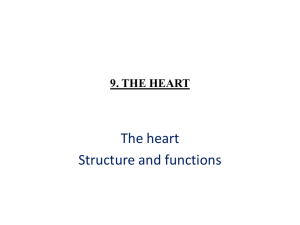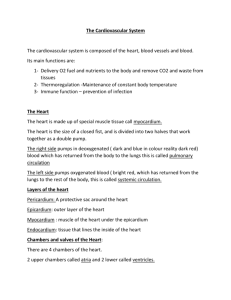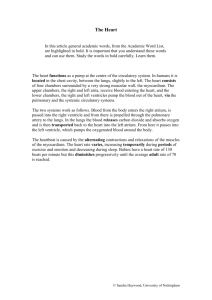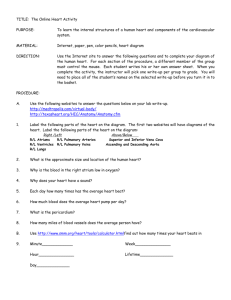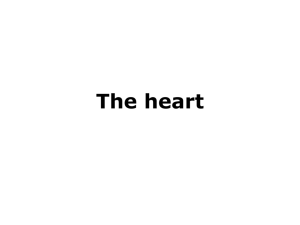Circulatory System
advertisement
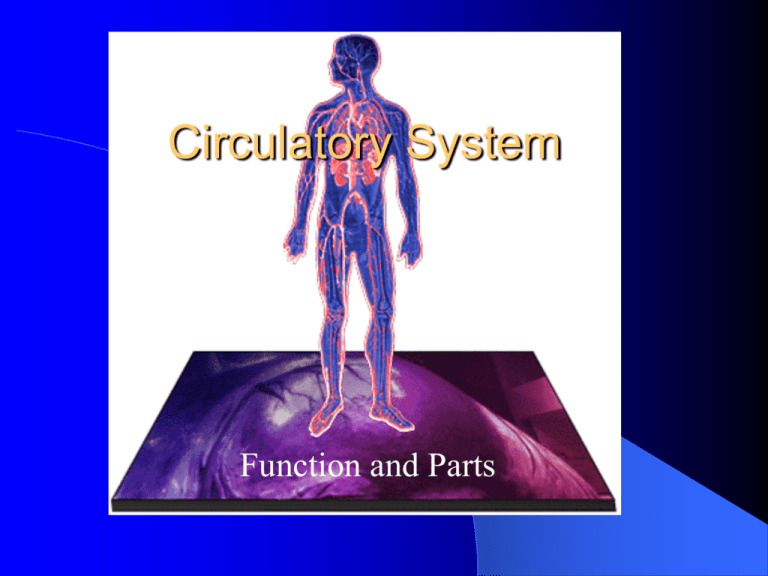
Circulatory System Function and Parts Definition It is a fluid-filled network of tubes (or vessels) through which materials move between the environment and the cells of a multicellular animal. Characteristics It connects all parts of an organism in a way that allows individual cells to thrive as well as for organisms to function as a unit It is an entirely closed system Function Transport materials needed by cells – Oxygen – Glucose Remove waste materials from cells – Carbon dioxide – urea Major Components Pump (heart) – Continuously circulates blood Network of tubes – Arteries- blood away from heart – Veins- blood back to the heart Blood – Fluid that fills the circulatory system Specific parts Pulmonary arteries- transport blood to lungs Pulmonary veins- transport oxygenated blood to hear Aortic arch and trunk- main arteries from heart Common carotid artery- carries blood to brain Renal vein and artery- connects to kidneys Mesenteric veins- connects to intestine Accessory Organs Lungs- organ where oxygen is taken up and CO2 is released Kidneys- organ where wastes are removed from blood; critical in regulating fluids in the body Small intestine- digestion Large intestine- water absorption The Heart The human heart has four chambers – Left and right ventricle – Left and right atrium The left side of the heart pumps oxygenated blood to the body while the right side of the heart pumps deoxygenated blood to the lungs where oxygen can be absorbed by the hemoglobin carrying red blood cells After passing through the capillaries of the lungs, the blood which is now oxygenated returns to the heart in the pulmonary veins. From lungs The left atrium receives blood from the pulmonary vein. Blood passes through the mitral valve into the left ventricle. Contraction of the left ventricle pushes blood through the aortic semilunar valve into the aorta. Blood travels to all regions of the body where it feeds cells with oxygen picked up from the lungs and nutrients from the digestive tract. To rest of body Deoxygenated blood returns from the rest of the body through the superior and inferior vena cava. The right atrium receives the deoxygenated blood. Blood then enters the right ventricle through the tricuspid valve. Contraction of the right ventricle pushes blood through the pulmonary semilunar valve into the pulmonary arteries in which it travels to the lungs. To lungs Blood Pressure Blood pressure is a measure of the force exerted by the blood on the wall of the arteries. – An example is 120/80 (systolic pressure/diastolic pressure. Systolic pressure is the result of the contraction of the ventricles (normal 110-140) Diastolic pressure is during the ventricle relaxation (normal 70-90)
